William Kentridge “Triumphs and Laments” in Boston
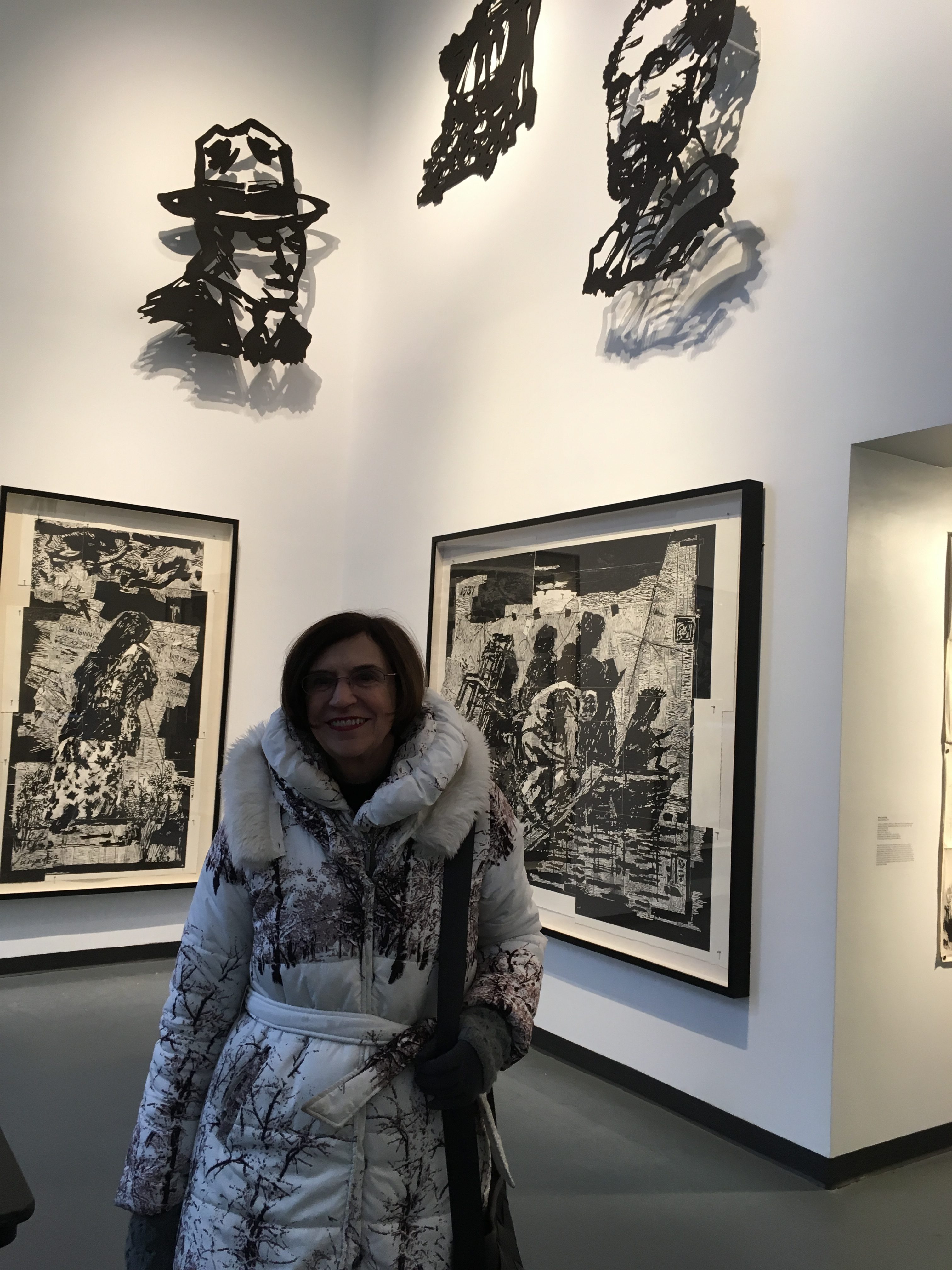
Curator Pam Allara in her exhibition “William Kentridge: Triumphs and Laments” at the Emerson Urban Arts Media Gallery, Emerson College, Boston. The exhibition included seven giant prints (you see two behind her suggesting their scale), steel sculptures on the wall based on huge heads carried in a performance called “Triumphs and Laments,” film clips from the performance which took place on April 21st 2016, and a maquette of the giant “reverse graffiti” frieze in Rome along the Tiber River. This is a sketch of the frieze which Kentridge refers to as “unwinding the Trajan Column”.
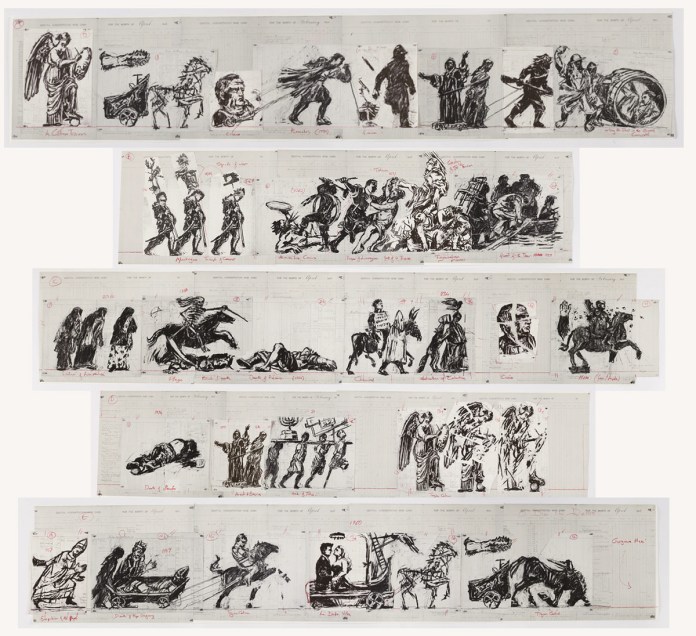
Here is Kentridge (on the right) walking beside the wall along the Tiber from “The Triumphs and Laments of William Kentridge” a BBC documentary by Adam Low, 2017. Lone Star Productions.
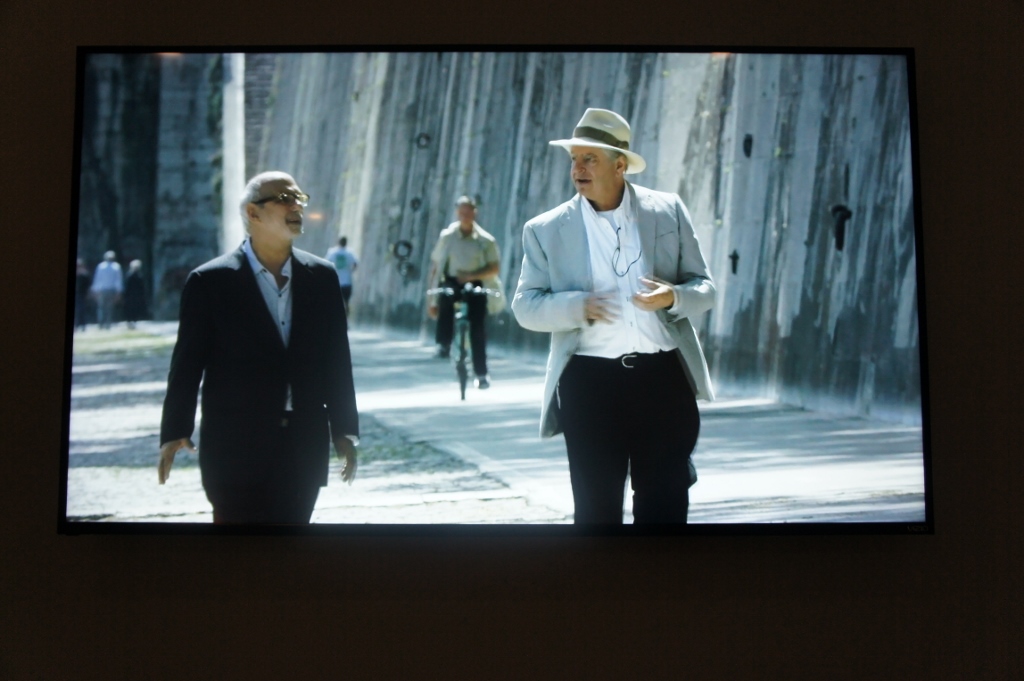
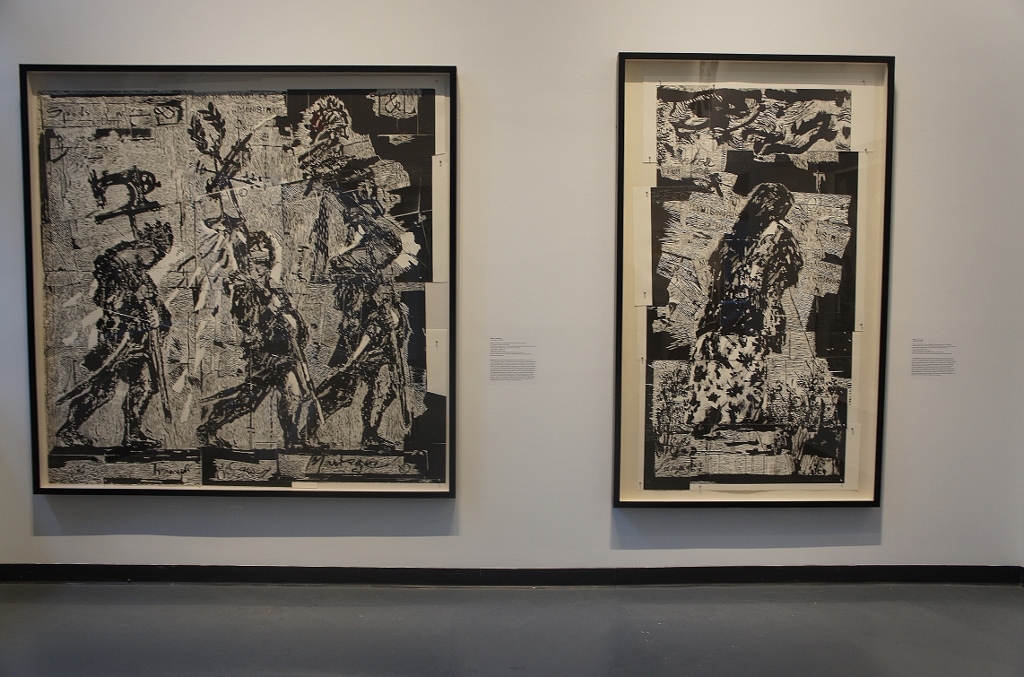
The giant prints themselves are technically spectacular. Here are two of three woodblock prints. They are printed on multiple types of wood, each producing a different texture when cut; the final print is held together with aluminum pins.
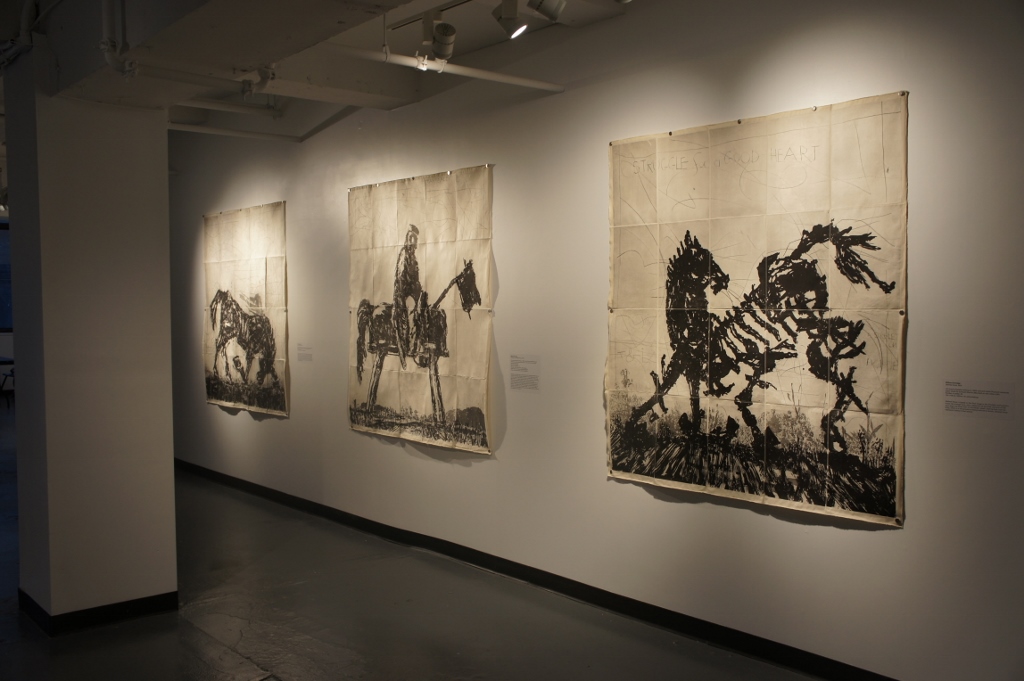
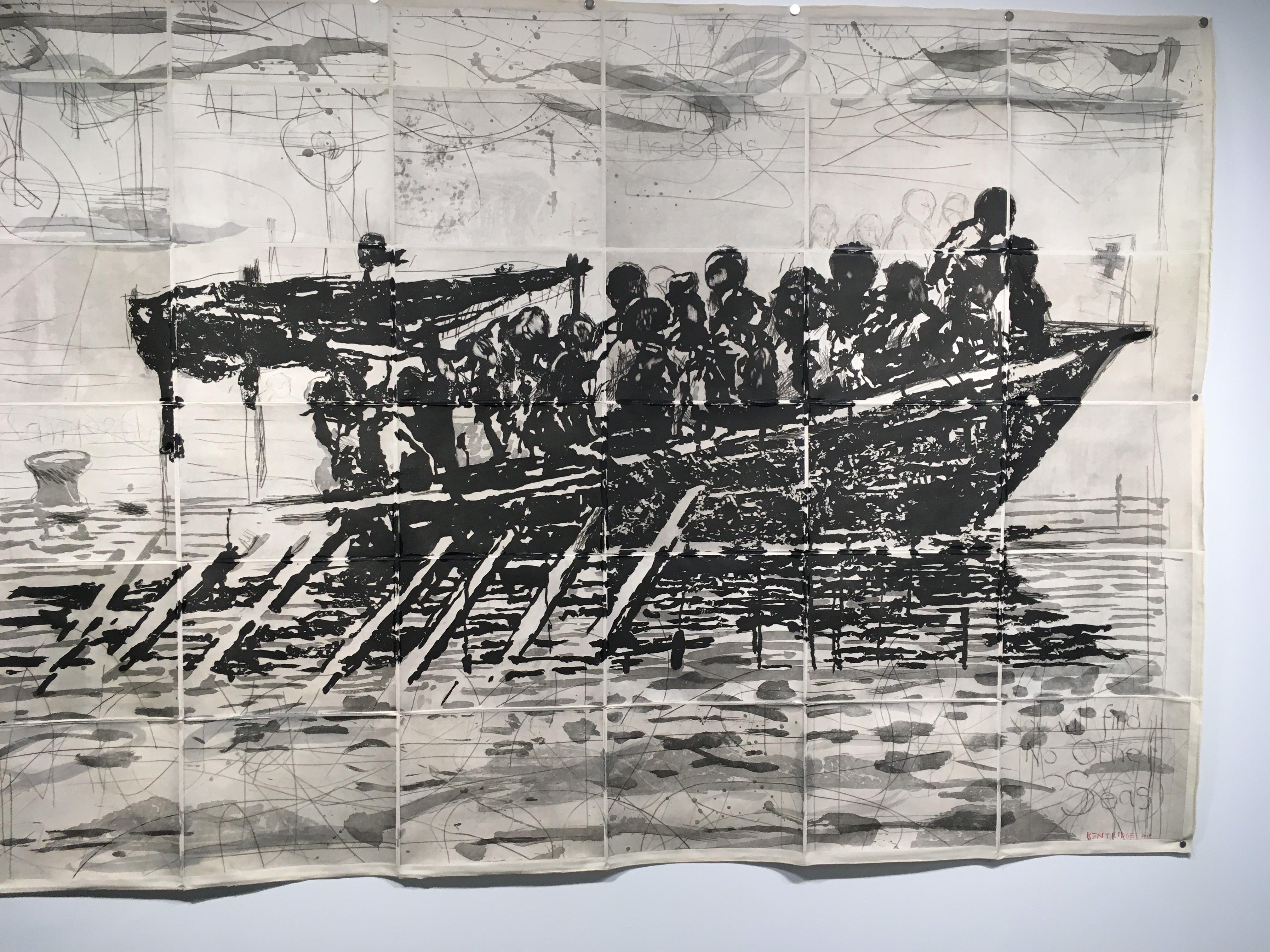
Another four prints came from the Artist Proof Studio in Johannesburg, also landmark printmaking. Lift ground aquatint on handmade paper, they include 20 plates, the print mounted on raw cotton cloth with sketching added by Kentridge.
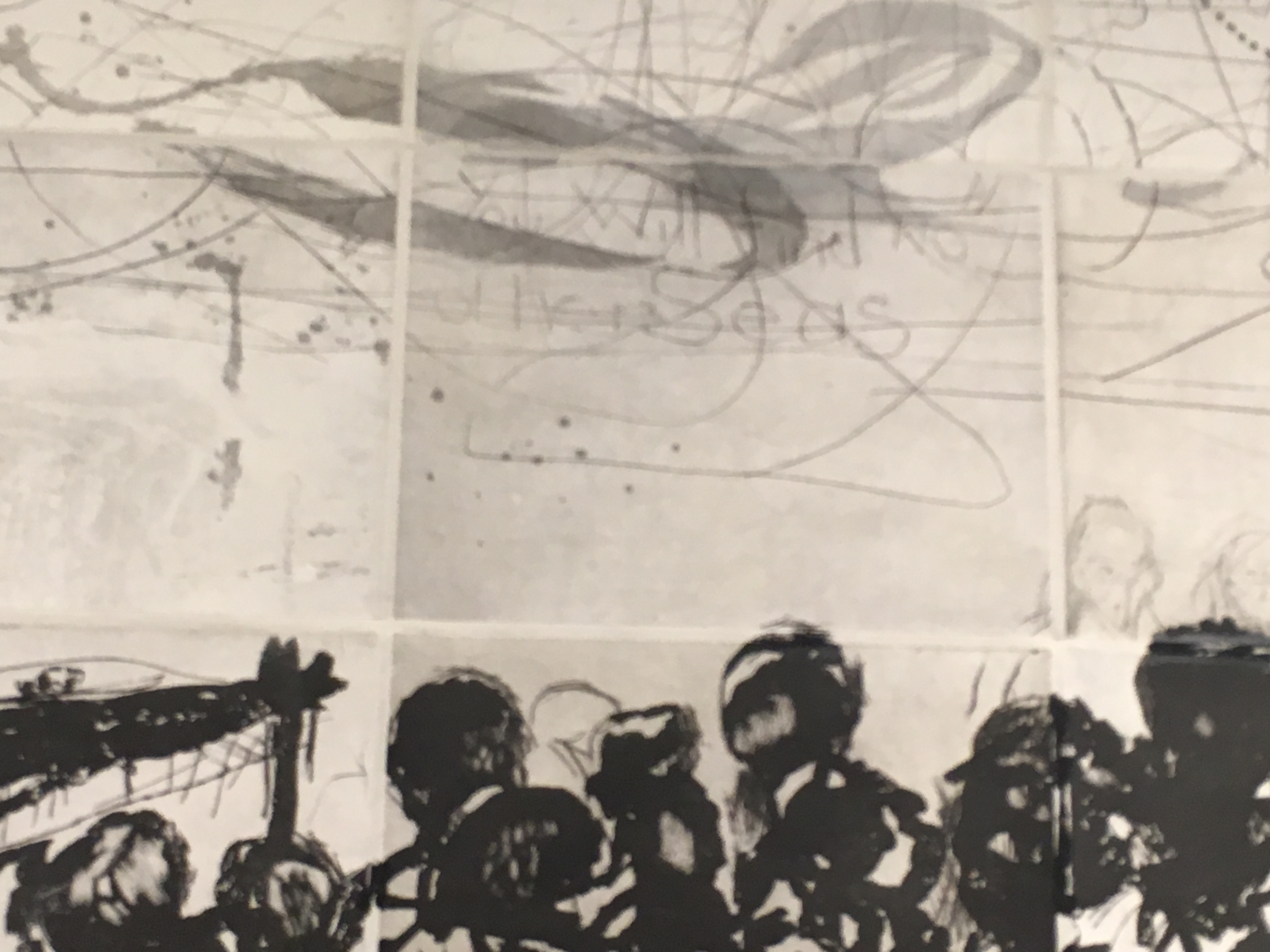
The seven giant prints draw on the themes of the procession directly: the concept that within the celebrated triumphs or war are laments and tragedies.
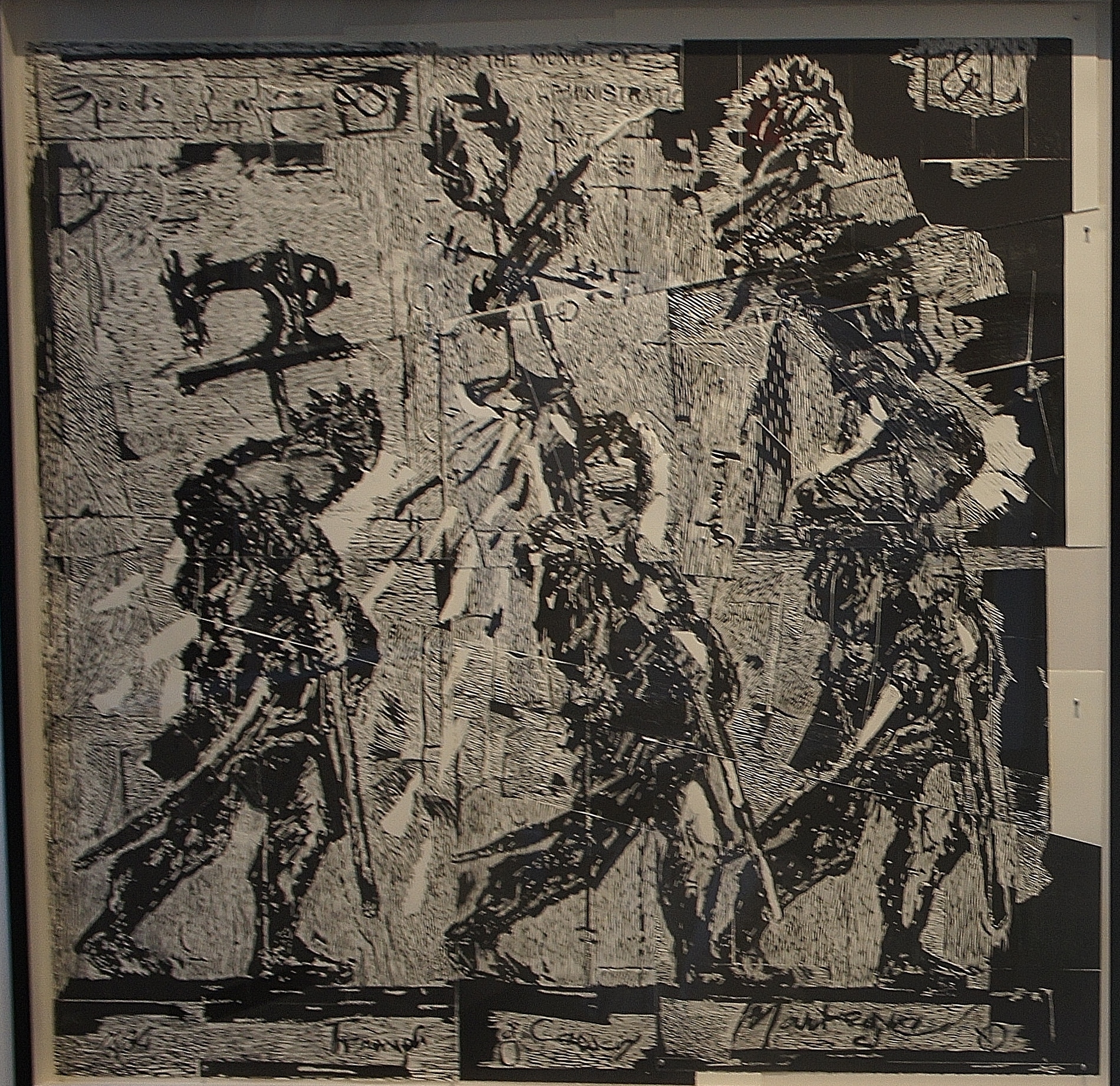
So first we have men with booty from a war, based on a work by Mantegna, but they are downtrodden.
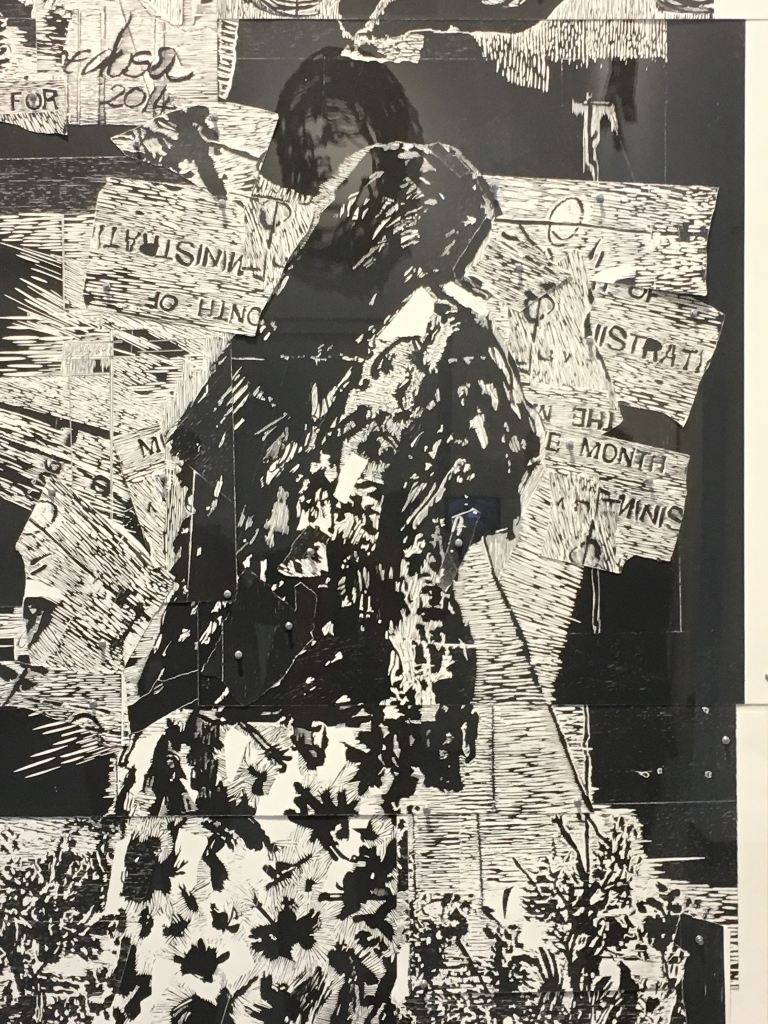 Next is “Lampedusa”, a reference to the contemporary tragedy of migration. In this work a single figure stands on unstable ground. Migration is one aspect of the underside of war and violence. We see it dramatically manifested in the present moment, both on the borders of Europe and the USA. A direct line connects current migrations from Syria, Turkey, Iraq, and Central America to migrations of ancient times following the ravages of war.
Next is “Lampedusa”, a reference to the contemporary tragedy of migration. In this work a single figure stands on unstable ground. Migration is one aspect of the underside of war and violence. We see it dramatically manifested in the present moment, both on the borders of Europe and the USA. A direct line connects current migrations from Syria, Turkey, Iraq, and Central America to migrations of ancient times following the ravages of war.

Nearby another work called “Flood”, suggests an unstable boat. Lampedusa is the island off of Italy that has received the most boats of refugees from Africa and near which the most refugees have drowned. The central stooped figure seems to echo one of Michelangelo’s anguished sculptures.

It is also the subject of the largest of all the prints, “Refugees, You Will Find No Other Seas”, from the Artist’s Proof Studio, using 36 plates. These desperate migrants crossing from Africa to Italy seem to be both contemporary and ancient. The boat is based on a Roman naumachia, used to fight ersatz battles in the Colosseum!
Here is one photograph of the opening Procession itself.
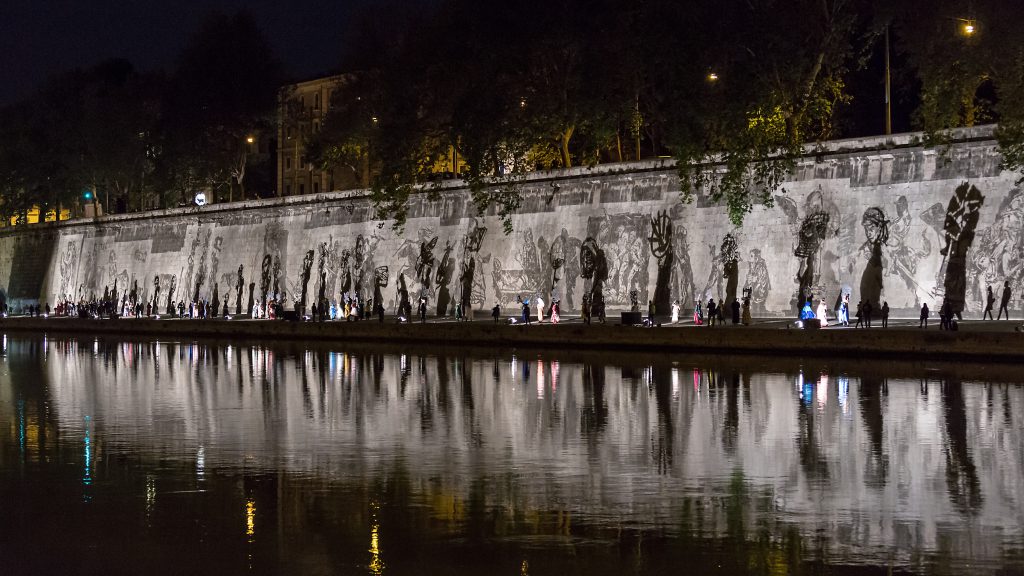
Procession as a theme is a constant reference point in Kentridge’s work. Usually he creates animations of endless processions of people carrying their lives on their heads in the form of furniture and goods. These processions mark tragedy, oppression, and hopelessness as well as endless perseverance and survival in South Africa, during the era of Apartheid. Kentridge has deep roots in that struggle.
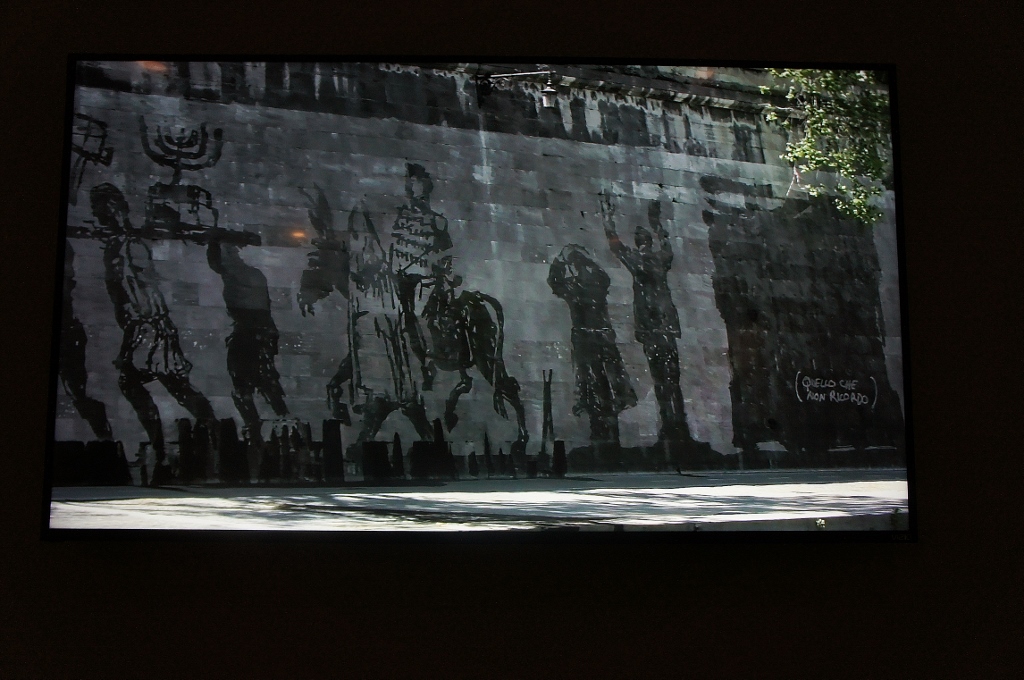
For his giant Tiber frieze, Kentridge rewrote the “triumphs” depicted on Trajan’s column, including the underlying tragedies of every triumph.
Over a period of three years, he created huge figures that make complex references to Roman history, Jewish plunder after the sack of Temple in Jerusalem, the holocaust, (the frieze is at the site of a former Jewish ghetto) , and the disastrous 1937 flood at the site of the frieze itself. These “reverse graffiti” appeared by actually removing the grime of the wall with power washing around stencils of fifty one images (selected from hundreds of possible historical references.) They will gradually disappear over time as the grime returns. To the right of the image above is a blank spot that is labelled ” what we do not remember” in Italian. Much of Kentridge’s work is about how little we remember of history and the distortions of what is remembered.
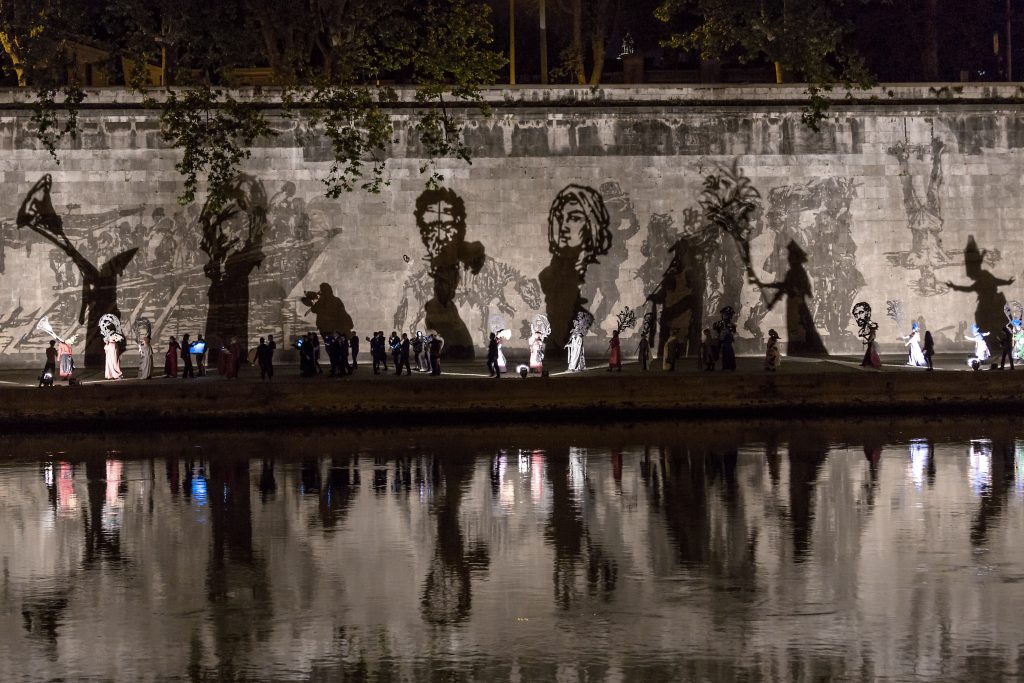
During the opening event, hundreds of people held giant cut outs of figures, heads and other objects, that were enlarged over the frieze imagery by lighting, suggesting a cyclical, and ever moving procession, accompanied by an orchestra. Here it is on you tube.
https://www.youtube.com/watch?v=fqKZ0rZgap4
In the exhibition in Boston, Allara included two clips from the opening performance as well as the maquette of the entire graffiti frieze explaining its complex iconography in an accompanying brochure.
It makes reference to, for example, the founding of Rome in the fratricide of Remus by Romulus.
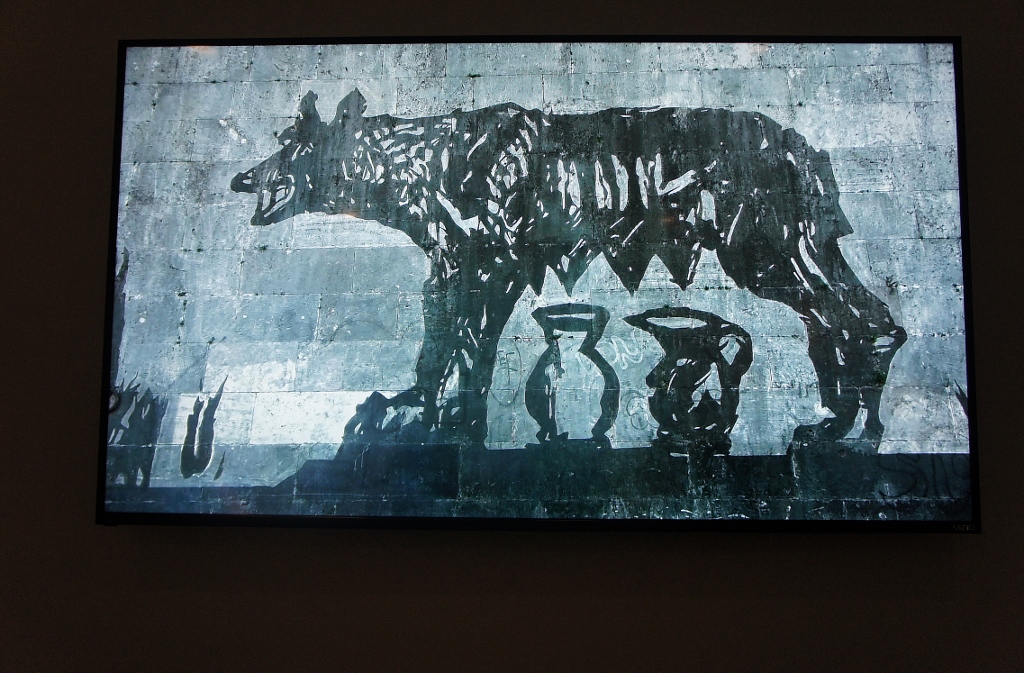
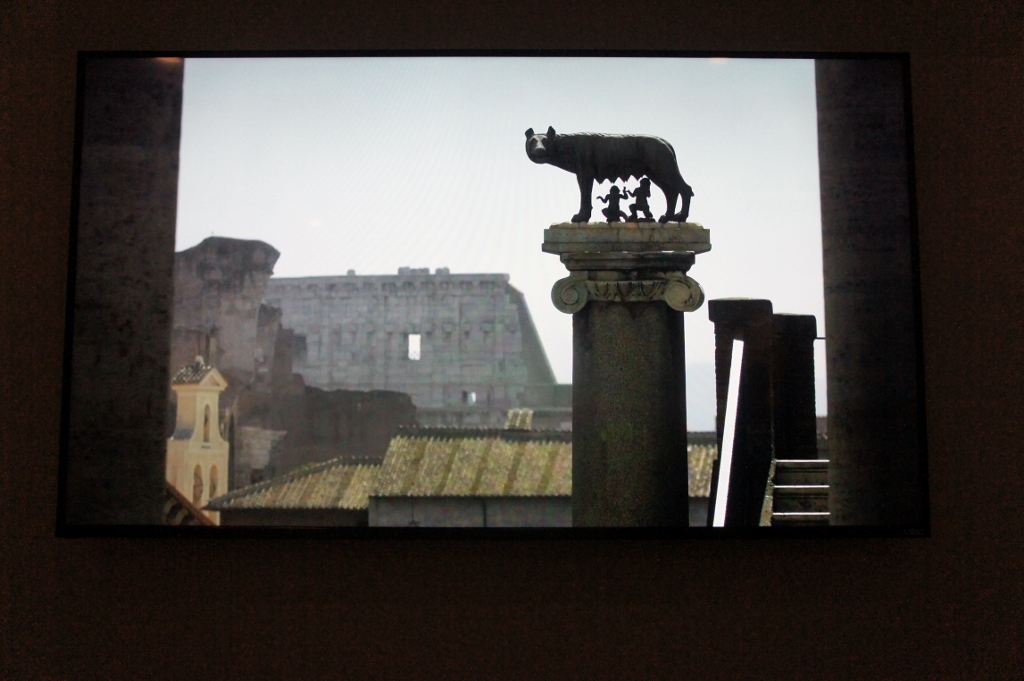
Also included are references to pathetic dying horses, usually the symbol of victory on many equestrian monuments, here they are referring to the suffering that goes with every victory.
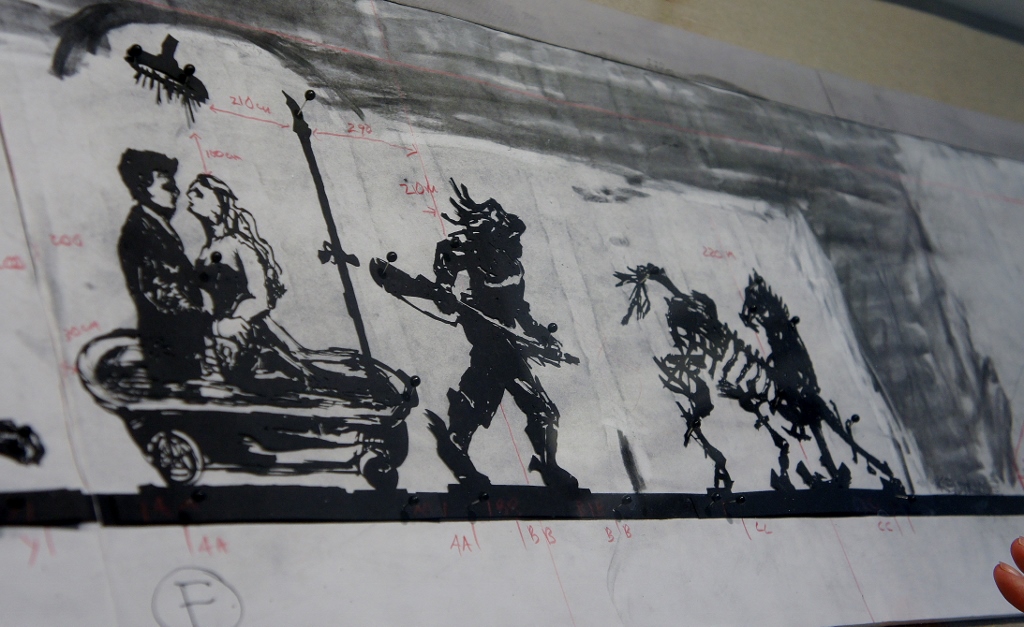
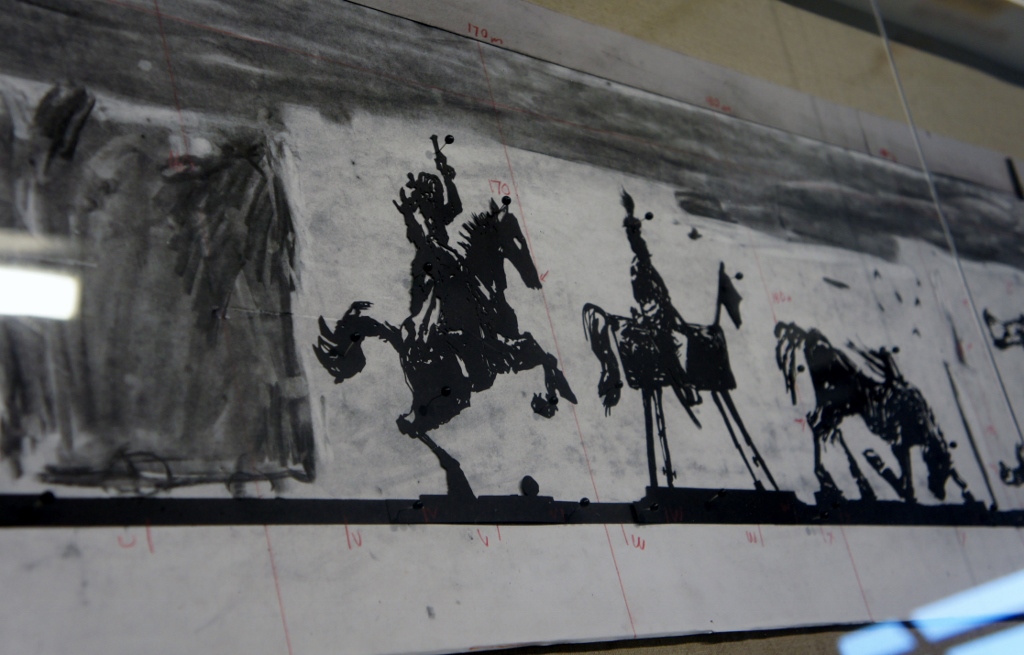
The horses are a major theme in the giant prints. We see Garibaldi the great liberator of Italy on a wooden hobby horse ( apparently the way that equestrian portraits were posed).
On either side of him are “The Triumph of Bacchus” and “Skeletal Horse,” the end of the myths of triumph. Here the horses stand in for the full tragedy and absurdity of war and its consequences. The connection to contemporary processions of people displaced by war is direct and specific in the large prints of “Lampedusa” and “Refugee”.
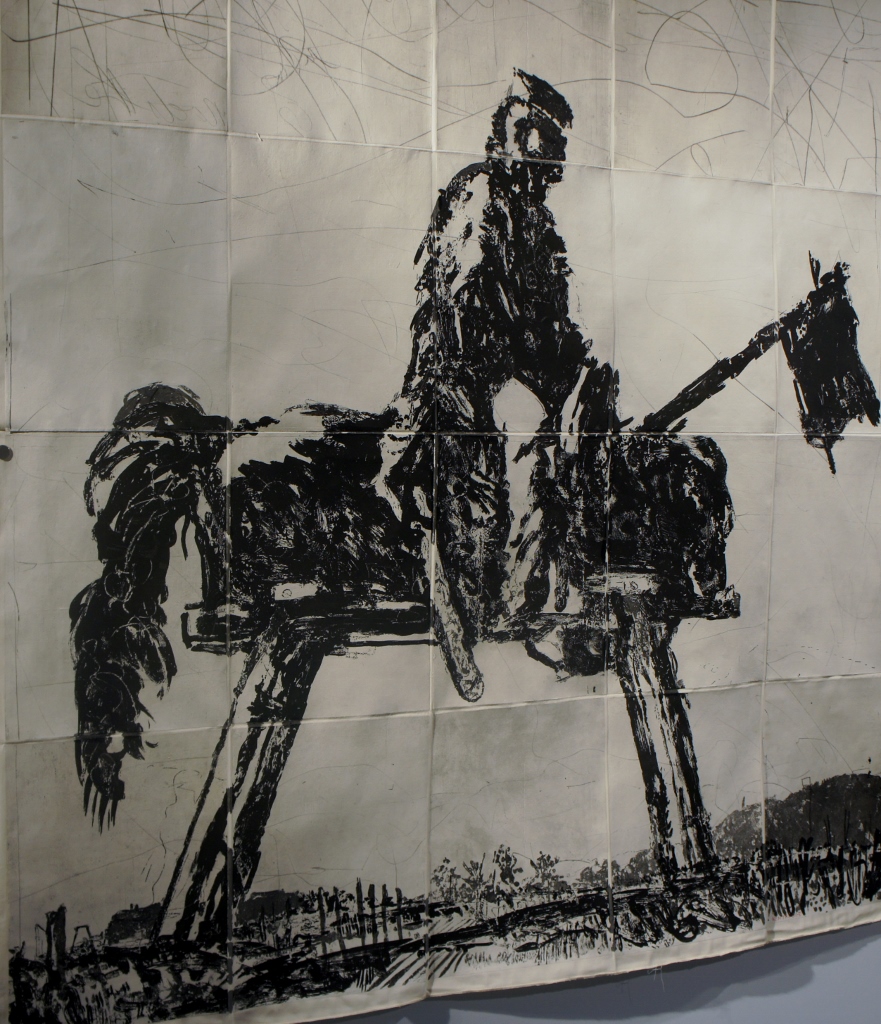
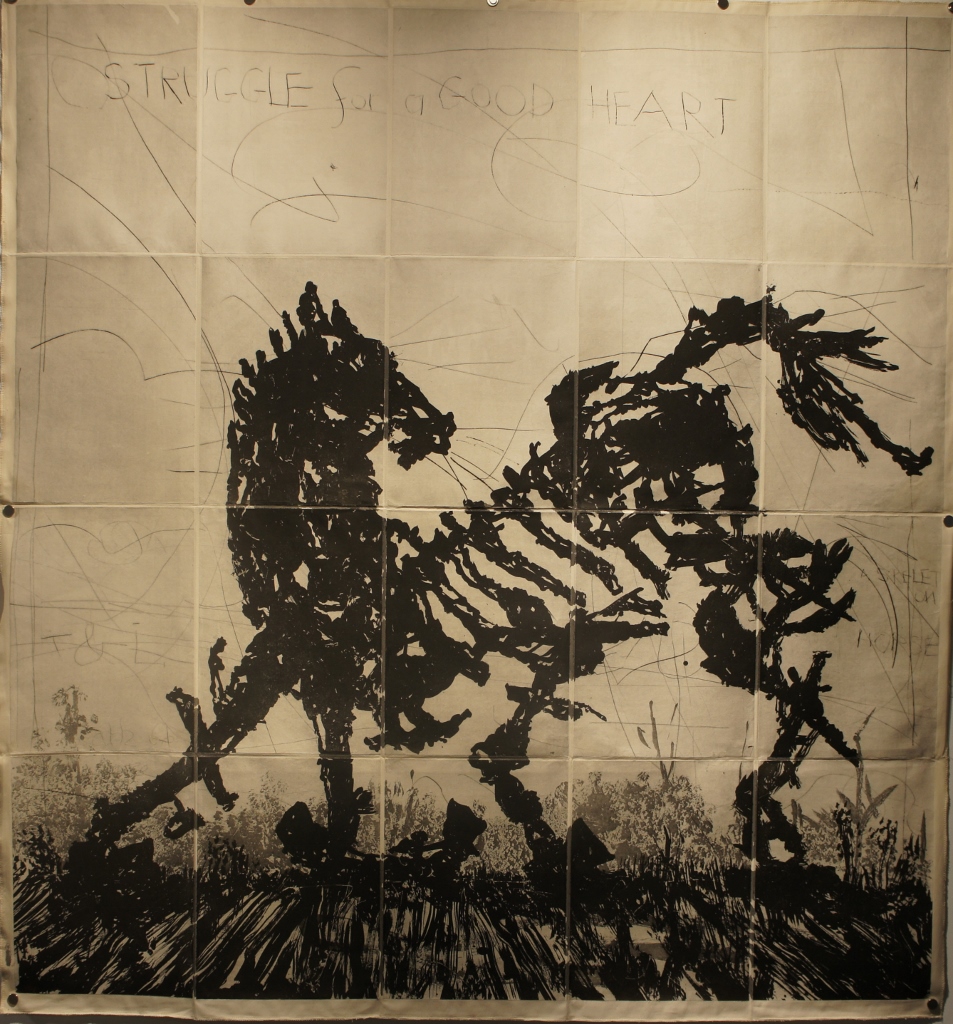
Skeletal Horse
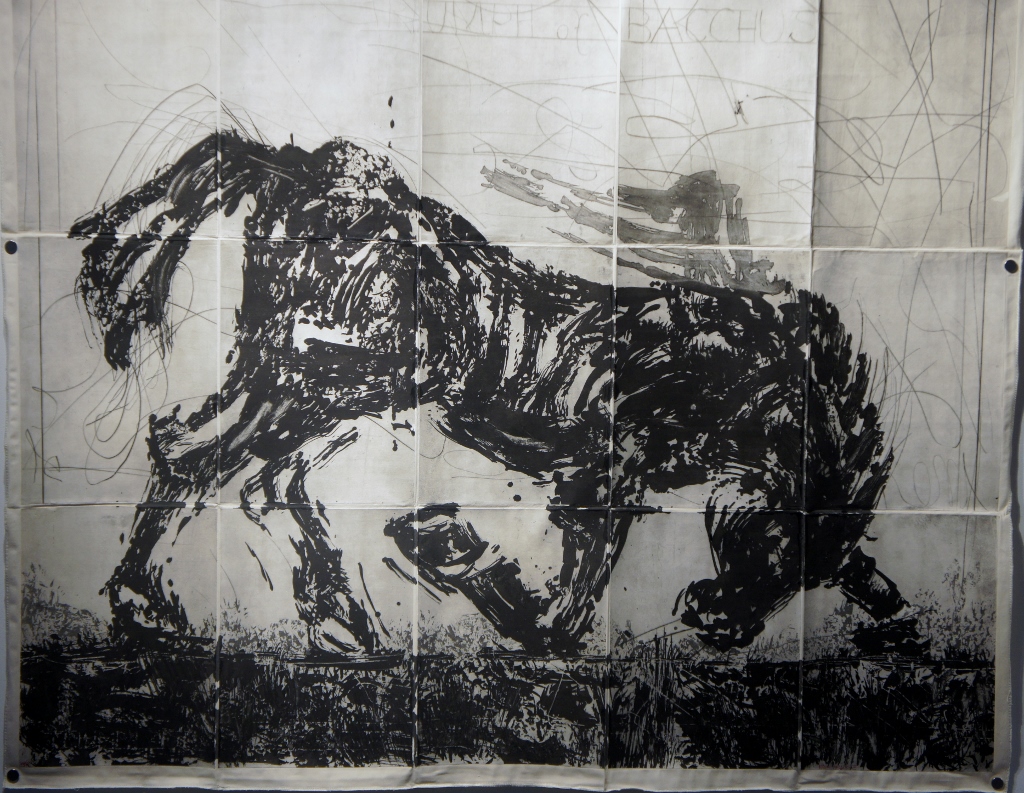
Triumph of Bacchus
The exhibition “Triumphs and Laments” in Boston, accomplished through Pamela Allara’s perseverance and direct connections to Artist’s Proof Studio, was a rare opportunity to gain new insights into the work of William Kentridge, one of the most important artists working today.
This entry was posted on May 3, 2018 and is filed under "the Kentridge moment", "War and the Body", "War Experience Project" Handspring Puppets, Contemporary Art, Culture and Human rights, Uncategorized.








